150. Underground stations at night
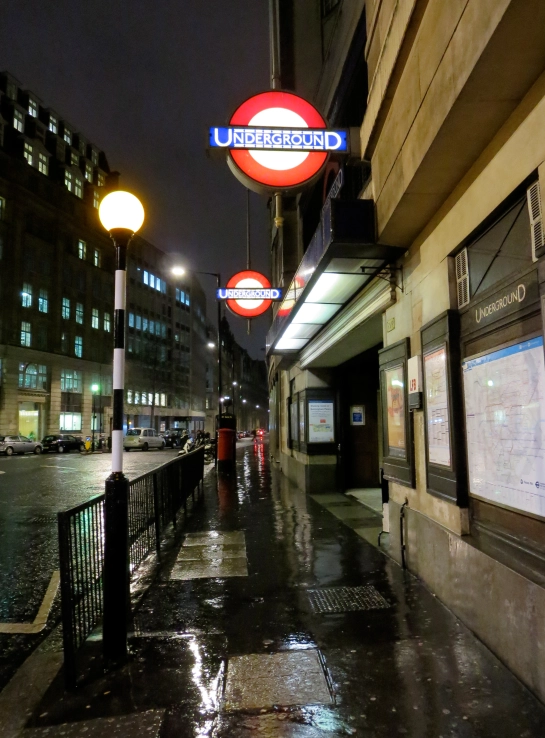 Stargazers often wonder how the sky at night over London would look were all the city’s illuminations extinguished. I often wonder how London would look from the sky at night were all its illuminations extinguished save the Underground.
Stargazers often wonder how the sky at night over London would look were all the city’s illuminations extinguished. I often wonder how London would look from the sky at night were all its illuminations extinguished save the Underground.
That’s almost an oxymoron. The clue is, after all, in the name. The founding principle of the Underground was to be out of sight: to be no surface and all depth. All it had to show for itself above ground, all it still has to show for itself – in the city centre at least – is its stations.
Its stations. Exactly.
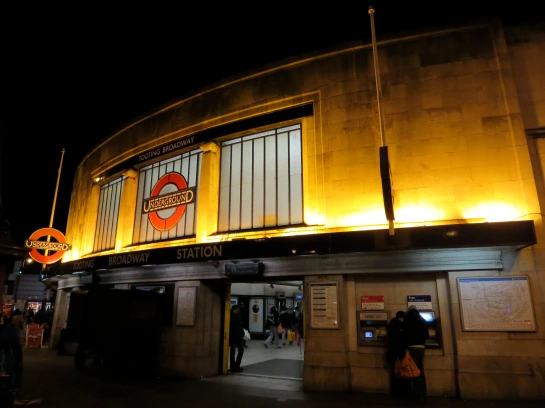 When the sun goes down, the curtain goes up on London’s longest-running attraction. It’s an uninterrupted stint that has lasted, in some cases, for a century-and-a-half. It’s also the capital’s most inclusive nightspot. Everyone can be seen here. Everyone is seen here. There’s no guest list, no dress code. Come as you are. Leave when you please.
When the sun goes down, the curtain goes up on London’s longest-running attraction. It’s an uninterrupted stint that has lasted, in some cases, for a century-and-a-half. It’s also the capital’s most inclusive nightspot. Everyone can be seen here. Everyone is seen here. There’s no guest list, no dress code. Come as you are. Leave when you please.
Irradiation plus imagination: that’s the only secret, and not an especially complicated or novel one.
Yet there are few things as inviting, and little that’s as comforting, as the sight of the entrance to an Underground station at night. Electrical balm flows towards you. The attraction can work over any distance; all you need is a glimpse of a roundel or a sign, even from far away, and something inside you is reassured.
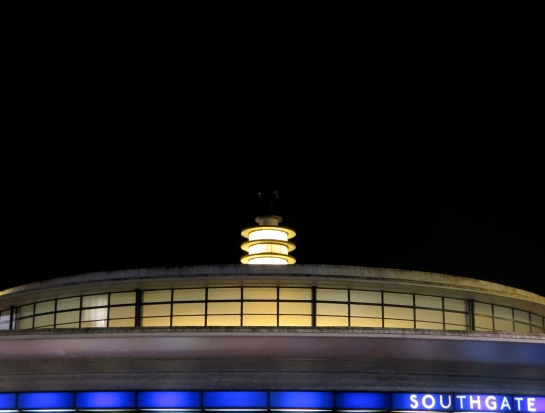 Why is this? What is catalysing such a reaction?
Why is this? What is catalysing such a reaction?
It is all those elements that make the Underground great – topped up with the added potency of, for want of a better phrase, tactical incandescence.
Those lights, those colours, that soothing glow: it’s all there by design, not chance. People have planned for this, have intended it to be this way: there are brains behind this beauty, and they have done this for us, and we can only feel charmed, favoured, perhaps a little blessed.
It’s something of a neat inversion: that the Underground, popularly known for its soot-black tunnels, dingy passageways and absence of natural illumination, blazes so brightly above ground when everywhere else falls into shadow. The poacher of light turns gamekeeper.
And that these fixed, unchanging points of light are offspring of something created not to encourage stasis, but to improve movement and circulation, is another rather sweet reversal of responsibility. At night the Underground becomes more of a shepherd than a signpost. How and where it flashes its wares above the earth’s surface is never more crucial.
Philip Larkin (yes, him again) wrote of how “light spreads darkly downwards” in stations and their environs. “In shoeless corridors, the lights burn. How isolated, like a fort, it is…”
These buildings, after dark, are intoxicatingly atmospheric. Their architecture infuses the air with stoical sadness. It’s something to do with that meeting of light and dark, how the one interacts, teases, and dances with the other. It’s a shifting, slightly rootless tableau, a place that is neither one thing or the other.
This makes it an ideal canvas on to which you can project your own thoughts and feelings. And this is perhaps the most appealing thing of all: the way a station at night can be an ideal place for moping and brooding, for fantasising and itemising, for a rendezvous or reconciliation, for a teary homecoming and an equally teary farewell. Louis MacNeice nailed it:
“And so to London and down the ever-moving stairs
Where a warm wind blows the bodies of men together
And blows apart their complexes and cares.”
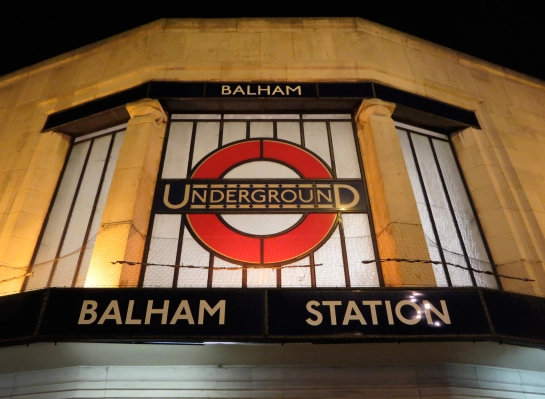 The night brings not just people but the whole network together, like the old ITV Telethons, only with real stars instead of pretenders.
The night brings not just people but the whole network together, like the old ITV Telethons, only with real stars instead of pretenders.
It binds stations as dissimilar as Wood Lane and Caledonian Road. It’s the great leveller, though rather than level down it grades everything upwards, putting all of the Underground on the same podium, be they 150 years old or just 18 months. Old, young, Victorian, Edwardian, modernist, post-modernist, smells, sounds, sights, sensations: they all look, and feel, better in the dark.
I know this is as much an affair of the heart as the head, and I know it’s only fleeting. At some point each and every night the barriers come down, the shutters go up and the lights are dimmed. Fade to black.
But I always take comfort from the knowledge that tomorrow I can begin anew, and that every time the sun sets I get to fall in love with the Underground all over again.
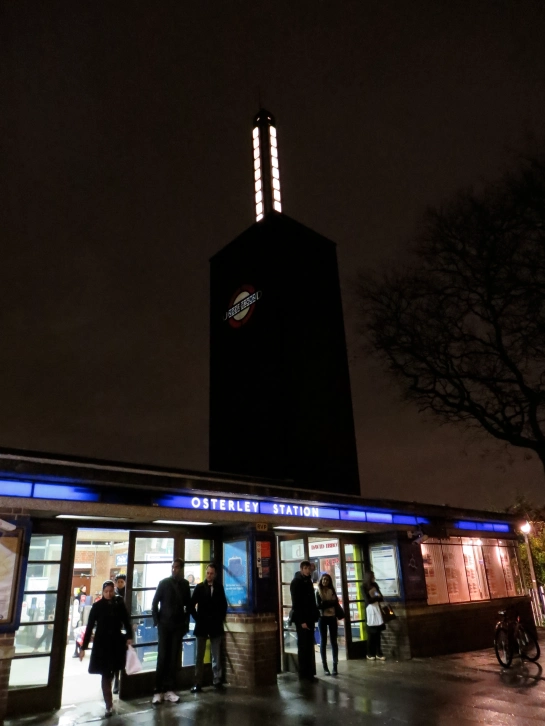
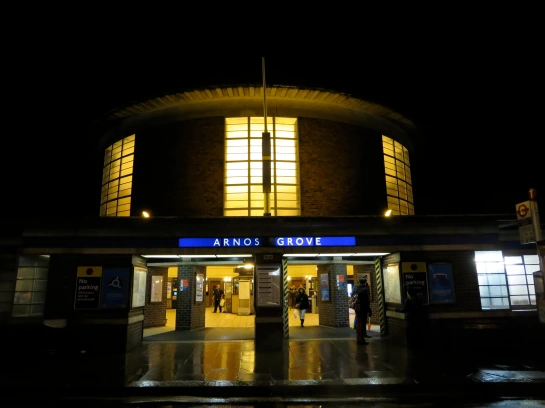
A perfect ending to a wonderful series. I’ve loved reading this blog over the last year. Very well done, indeed.
Many thanks for this magnificent series, which has definitely brightened my 2013. A very Happy New Year to you, sir!!
Good job with this blog, really enjoyed reading it! Happy New Year to you 🙂
A fine way to end the series.
Thank you for all your effort. It made a far more interesting celebration of 150 years than any in the reported news.
Thanks for the kind comments, folks. Glad you’ve enjoyed reading the blog. Hopefully my words and photos have gone a little way in kindling – or rekindling – your interest in and appreciation of the glorious Underground.
Very well written. Excellent photographs. Thank you for a great series of posts.
Can I echo the above comments and thank you for a really enjoyable series of posts over 2013.
Thanks from me as well. Look forward to reading whatever you blog about next.
I’ll miss these posts. It’s been wonderful reading, Congratulations on a lovely piece of work 🙂
Like those above I have really enjoyed this blog and it is a shame it has come to an end, there is still so much to explore on the Underground I am sure. Many thanks for a great read.
Just like to echo those comments. Evidently a lot of care, attention and love went into these posts. Thank you
Brilliant blog and thanks to it I noticed the Hitchcock mosaics at Leytonstone today on my first ever visit. Also enjoyed the platforms at Wanstead. Some things I always notice and love – couple of old roundels at West Brompton with the “W” as two crossed “V”s and any roundels that show older names. There’s at least one at South Wimbledon that reads “South Wimbledon (Merton)”.
Congrats on the 150 posts! This has been a truly enlightening series to keep up with, and it has made me stop for a few moments and admire the architecture in the underground. I used to just treat them like any other mundane location but now pieces catch my eye and I think about the date it came into existence. Thank you for inspiring me to think and appreciate our essential, if a little temperamental, transport system. 🙂
P.S I was on a station and saw someone take a camera out and take a photo of a roundel, and wondered if it was you. I think I was just mistaken and it was probably a tourist about to Instagram it, haha.
Thank you for your fascinating and beautifully written blog. I’ll miss reading new posts but I’ll carry on enjoying some of the weird and wonderful details of the underground which I’m sure I wouldn’t have noticed otherwise.
Thanks for the blog thoroughly enjoyed the ride.
This has been a fantastic series to follow. Any thoughts of publishing it in a book?
Thanks, everybody, for your kind, generous comments. I’ve been touched and flattered by your enthusiasm and support.
A belated well done and thank you for making my visits to London even more interesting. I’d certainly buy the book if you ever decide to put blog to paper.
This project has been a real treat to read; a sort of comfort blanket of a blog is called up whenever I’ve tapped its icon on my phone. Thank you very much for sharing such an erudite and educational labour of love.
I was pointed in your direction by accident, courtesy of google images, while looking for something else. And now, about an hour or so later, I’ve finished all 150. A superb read, a couple of ideas & places to see (tube geek here!) that I’ve missed, and a cracking piece of work. Three words to finish, Do the book!
Bit late but I would just like to add how much I have enjoyed this project not just because I love the underground but also for the various cultural references that have been included along the way; my favourite being the mention of Girl Number VII by Saint Etienne in relation to Arnos Grove. I even visited Chesham Station on the strength of this blog just to see the water tower and while visiting looked up while clutching my hat to my head much like the Betjeman statue at St Pancras and spotted a Red Kite hovering above. Perfect. Anyway, thanks again.
Great series — fantastic! I only just stumbled upon it and can’t stop perusing through it. What a great adventure and celebration of a truly superb transport system. (I’m from New York where the subway, understandably, isn’t similarly loved — though I think it’s still underappreciated.)
I have visited London frequently since 2001 and use the tube as my primary transportation around town, from Heathrow to Stratford, from Tooting Broadway to Colindale and everywhere in Zones 1 and 2. However, I was most astounded to board a train in the middle of Chelsea and exit at Oakwood to find myself unexpectedly looking at fields and cows. Who knew??? Many thanks for your photos and entertaining commentaries.
(PS I, too, believe that a station announcement prohbiting the use of cameras was made because I’d taken a photo of my son in front of the Sherlock Holmes tile wall at Baker Street.)